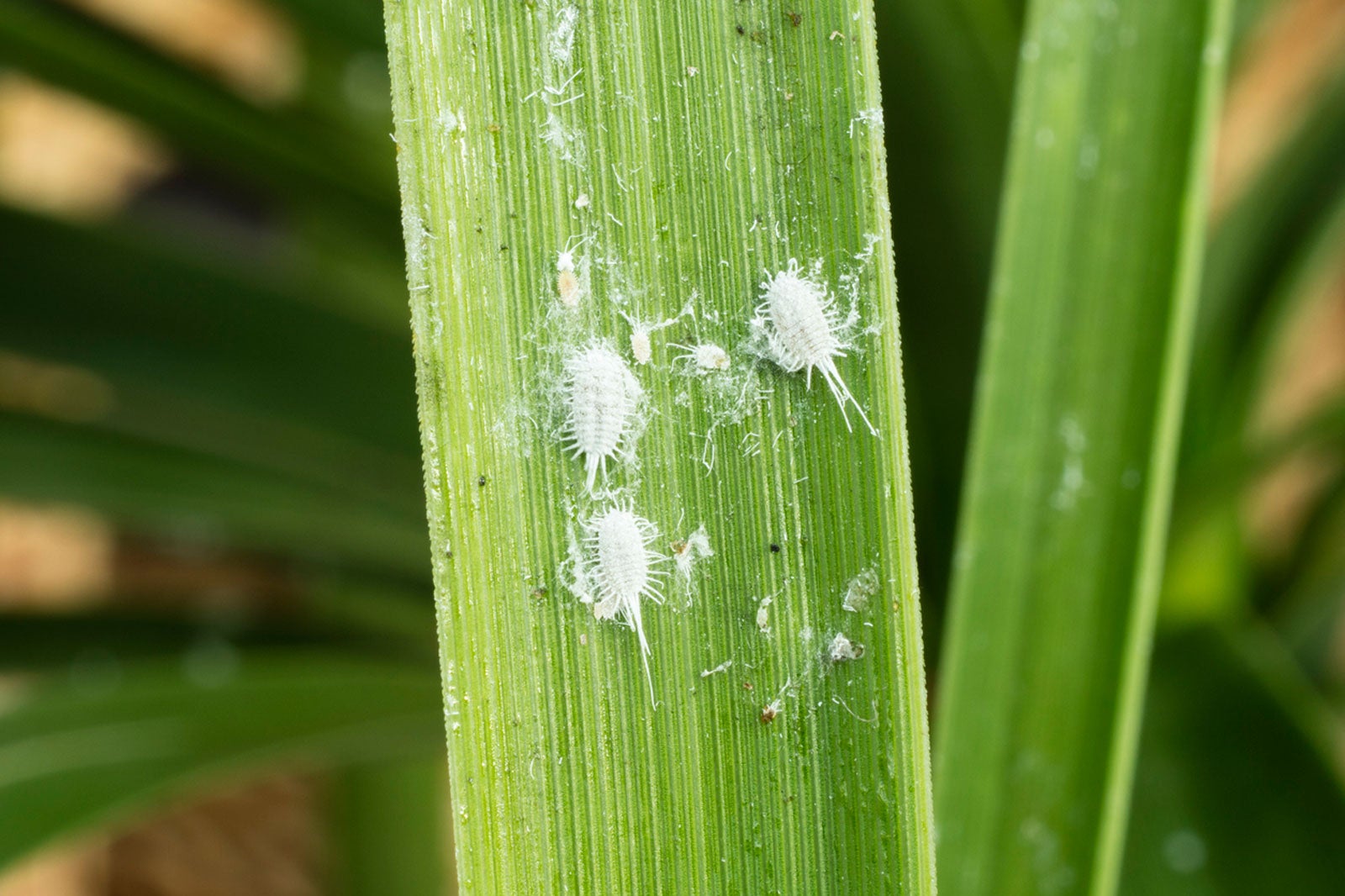Managing Mealybugs Outside: Tips For Outdoor Mealybug Control


The leaves on your outside plants are covered with black speckles and spots. At first, you suspect some type of fungus, but, upon closer inspection, you find tufts of cottony material and segmented waxy bugs. Congratulations, you've discovered mealybugs in the garden.
Identifying Mealybugs in the Garden
Mealybugs are piercing, sucking members of the insect superfamily Coccoidea. Common in houseplants, they also affect plants growing in the garden. They range in size from 3/16 to 5/32 inches (1 to 4 mm.) long, depending upon their maturity level and species. Mealybugs on outdoor plants tend to live in colonies.
The females can look like small patches of cotton, especially when laying eggs. The short-lived adult male mealybug resembles a two-winged fly and is rarely seen. The newly hatched nymphs range in color from yellow to pink. They are quite mobile compared to adults and later nymph stages.
Mealybugs in the garden reduce plant vigor, particularly when large populations suck sap from the leaves and stems of plants. As they feed, mealybugs secrete honeydew, a sugary excrement. Sooty mold fungus grows upon the honeydew. This reduces the plant's ability to conduct photosynthesis, causing the leaves and parts of the plant to die.
Controlling Mealybugs on Outdoor Plants
Due to their waxy coating and seclusive nature, insecticides are not very effective in controlling mealybugs on outdoor plants, although neem oil can occasionally help. Outdoor mealybug control can best be achieved by utilizing their natural predators. This makes managing mealybugs outside in the garden much easier than controlling indoor populations on houseplants and in greenhouses. Here are some of the mealybug's natural enemies:
- Ladybird beetles (ladybugs, lady beetles) feed upon small insects and insect eggs.
- Green and brown lacewing larvae (aphid lions) can consume up to 200 insects a day.
- Spiders are common predators that trap, actively hunt or ambush small insects.
- Minute pirate bugs (flower bugs) are vigorous hunters that kill small pests even when they don't need to feed.
- Mealybug destroyer beetle (mealybug ladybird) is a non-spotted species of ladybug that prefers mealybugs.
Preventing Mealybugs on Outdoor Plants
Beneficial cultural practices can also be used for outdoor mealybug control. Follow these agricultural tips to prevent and reduce populations of mealybugs in the garden:
- Before purchasing new plants, inspect them for the presence of mealybugs. Mealybugs migrate slowly, so most new infestations come from nearby infected plants.
- Inspect mealybug prone plants regularly. Handpick the insects or prune infected branches.
- Avoid using insecticides that can kill beneficial predatory insects.
- Check pots, tools, stakes, or other equipment that could be harboring adult mealybugs, eggs, and nymphs.
- Use water pressure to remove exposed mealybugs. This can prevent these slow moving insects from re-establishing feeding sites. Mealybugs can only last a day without eating. Repeat every few days for maximum effectiveness.
- Avoid nitrogen-rich fertilizer. Applications stimulate green growth and encourage mealybug population growth.
- Remove severely infected plants and replace with plants less prone to mealybug invasions.
In most cases, encouraging or releasing beneficial insects and following conventional cultural practices will effectively reduce populations of mealybugs.
Gardening tips, videos, info and more delivered right to your inbox!
Sign up for the Gardening Know How newsletter today and receive a free copy of our e-book "How to Grow Delicious Tomatoes".

Laura Miller has been gardening all her life. Holding a degree in Biology, Nutrition, and Agriculture, Laura's area of expertise is vegetables, herbs, and all things edible. She lives in Ohio.
-
 12 Lush Alternatives To A Lawn For Sustainable Spaces
12 Lush Alternatives To A Lawn For Sustainable SpacesAlternatives to a lawn are beautiful and also beneficial to your local ecosystem and its pollinators. Explore our top picks for plants to replace grass.
By Tonya Barnett
-
 Types Of Tomatoes Explained: Explore The Many Wonderful Shapes, Colors, Flavors, & Best Uses
Types Of Tomatoes Explained: Explore The Many Wonderful Shapes, Colors, Flavors, & Best UsesThe world of tomato varieties is vast and fascinating. Learn about the key types to grow in your garden, tailored to your preferences and space.
By Amy Grant